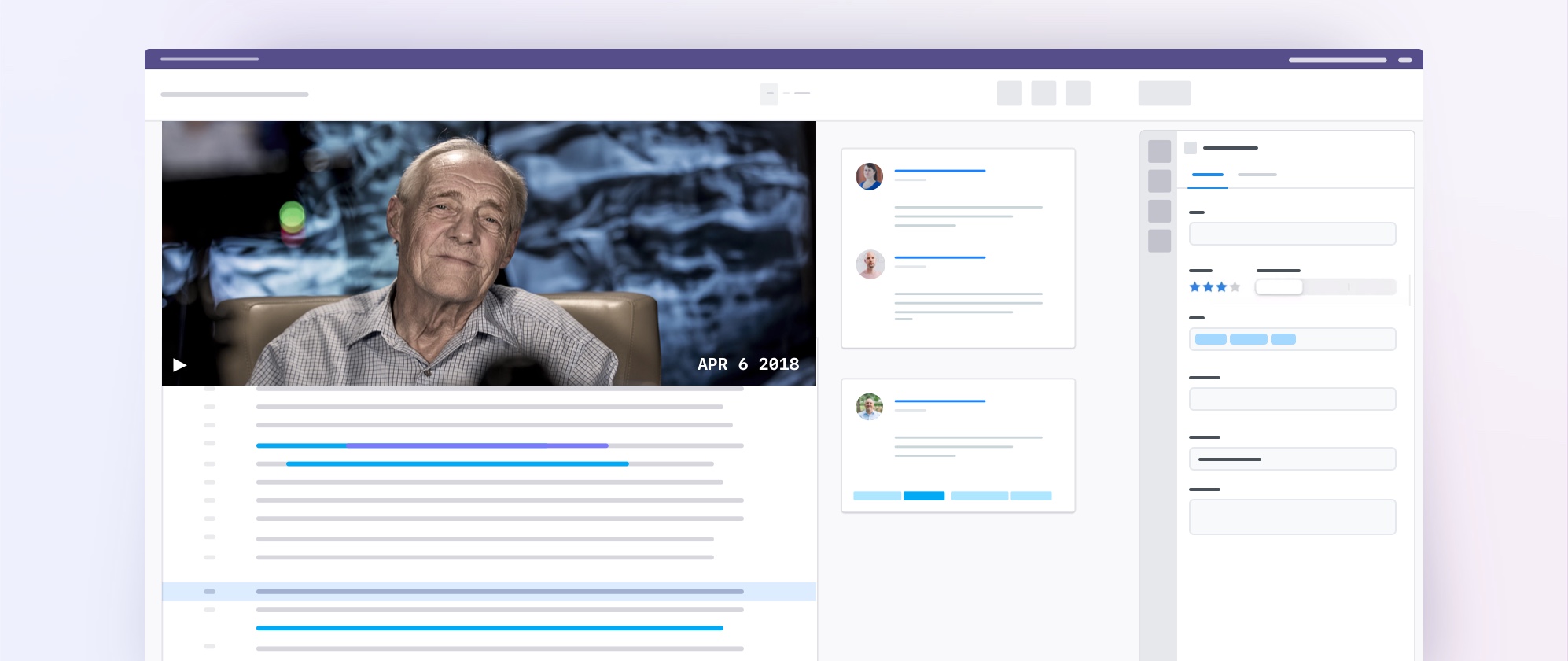
Designations is a pre-trial process in which parties identify the deposition testimony they intend to use over the course of the trial. The parties must come to an agreement on what evidence is admissible and what is not. If not, the court will intervene to resolve any outstanding issues.
Perhaps unsurprisingly, the designations process can be a stressful one—high stakes and fraught with uncertainty. But with preparation and the right approach, designations do not have to be especially painful.
Read on for a deep dive on the process and best practices for making designations more successful—and much less stressful.
How Designations Work
The designations process consists of a series of iterative exchanges between the parties involved in a case. The court may limit the number of exchanges or allow more, depending on the context.
However, the timing of this process is incredibly compressed. Deadlines are strict and rigorously enforced. Once the parties exchange affirmatives, they cannot exchange another round. They must instead submit counters and objections.
While designations do not necessarily follow a linear path, here is a general outline of what they look like.
Affirmatives
Affirmatives are the initial designations that a party seeks to submit as evidence during a trial.
This part of the process can be especially challenging, since each party does not know what the other side is going to submit. As a result, it is difficult to make strategic decisions about what to submit.
Counter-designations
In the affirmative exchange, each party typically designates the testimony that is most favorable to them, often omitting clarifying or mitigating context. The opposing parties then submit counter-designations to bring in the testimony that the affirmatives sought to exclude, thereby providing additional context and balance. Essentially, the party is saying, “If you admit this testimony, you must admit this additional testimony.”
Objections
An objection is simply a reason, grounded in the rules of evidence, why designated testimony should not be admitted. Each party can object to any designation, whether an affirmative or a counter.
Common grounds for objection include hearsay, relevance, and speculation. To navigate the objections process, the parties agree in advance on a list of acceptable objection bases (OBs), which may be refined as the exchange progresses. Each OB is typically assigned a shorthand – like “H” for Hearsay – for concise reference, particularly in the margins of transcript submissions.
In most instances, parties will object to an entire source designation rather than to specific portions of it. However, partial objections do occur frequently enough that your transcript management platform should accommodate them, on import and export.
Subsequent Exchanges
After the initial rounds of affirmatives, counters, and objections, the process may continue with additional back-and-forth between the parties. If needed, a party can respond to a counter with a counter-counter designation or a counter-objection. Importantly, these subsequent rounds are strictly limited to addressing the counters raised in the immediately prior round. Parties cannot introduce brand new designations at this stage or respond to affirmatives. This can continue with further exchanges, such as counter-counter-counters and beyond.
Platforms like Everchron are especially valuable during these iterative exchanges, helping teams keep track of every affirmative, counter, and objection from every party. Even as the rounds become more complex, Everchron preserves the sequence of responses, ensuring that no issue is overlooked and that the record is fully prepared for court submission.
Resolving Disputes
Before trial, every counter and objection raised during deposition designations represents a potential dispute that must be addressed and resolved. When a counter is made, both sides must decide whether the countered testimony will be admitted in full, admitted in part, or excluded altogether. For objections, the party who originally designated the testimony must either agree to remove the challenged portion, or the objecting party must choose whether to withdraw their objection.
In practice, most designation disputes are resolved directly between the parties during the pretrial process (often through meet and confer sessions). Courts strongly encourage parties to resolve these issues themselves and generally prefer not to intervene. Judicial involvement is typically reserved for significant disputes or situations where the parties are unable to reach an agreement on their own.
Best Practices to Make Designations Easier
In general, designations get more complex as parties add more depositions, exchanges, or parties, if the exchange windows are short, or if counterparties are difficult to deal with. Here are a few tips to help make the process easier.
Get started early.
Start coordinating with opposing counsel as early as possible to align on critical details, such as party color-coding schemes, objection basis lists, and the format for exchanging reports. Agreeing on these elements upfront is especially important if you plan to import data into your transcript management platform. Solutions like Everchron streamline this entire process, offering dedicated workflows to help your team manage designations, objections, and exchanges efficiently from start to finish.
Streamline deposition designations.
Consider using a transcript management platform like Everchron to organize deposition designations to avoid confusion and unnecessary work. With Everchron, for instance, you can export designations into a variety of custom formats to exchange with other parties and submit to the court. Imports can quickly ingest the other party’s designations so teams can get to work on responding as soon as possible. Everchron captures and visualizes the trail from affirmative to object to counter to counter-counter in a “Designation Sequence,” enabling the team to clearly see what they are working with.
Be ready for trial.
Thorough preparation is essential to ensure a smooth and successful presentation of deposition testimony at trial. Before you step into the courtroom, make sure your team has finalized all transcript designations it may rely on during the proceeding. Prepare clips of video depositions well in advance and confirm that they are properly synced with the transcripts. Always ensure that anything you may present in court is consistent with the court’s rulings and orders.
With a platform like Everchron, your team can stay trial-ready by centralizing and streamlining the management of your transcript designations, video clips, and accompanying exhibits. With everything clearly laid out and easily accessible, you’ll be able to respond quickly to any last-minute developments, efficiently present evidence, and maintain your focus where it matters most.

